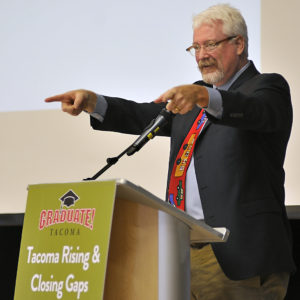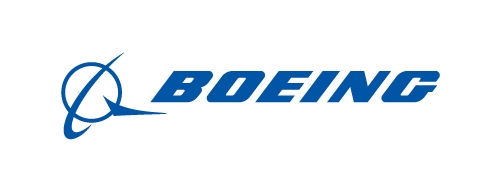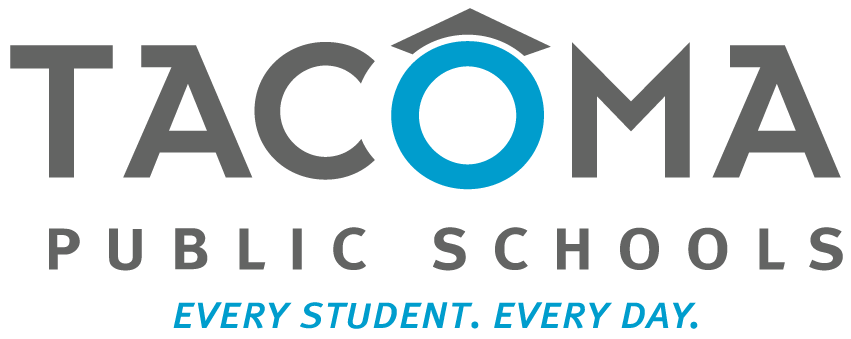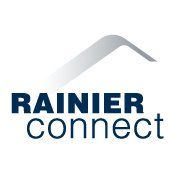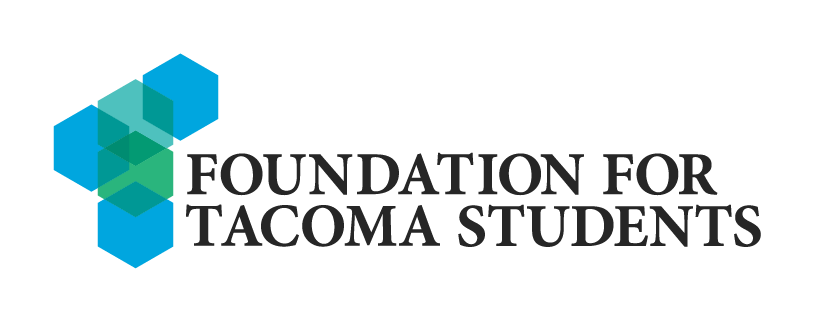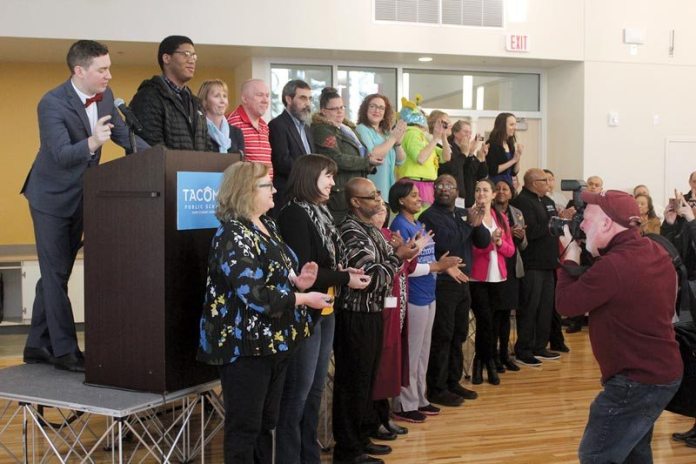
Tacoma Public School District officials, teachers and community partners held a short-and-sweet celebration last week to mark the release of its graduation figures. Now the district will focus on lawmakers in Olympia to shore up state funding for schools. So far the district has been forced to lay off staff and foresees more cuts with a projected shortfall of $38 million next year.
The crowd was all smiles at a ceremony at the Eastside Community Center last week when school officials and community backers marked the fact that the graduation rate from Tacoma public schools has topped 89.3 percent – the highest since the state began officially tracking the statistic 15 years ago. The gain also marks the eighth straight year of increased graduation rates in the district.
Inside the district’s overall graduation numbers are statistics for each high school that range from a low of 66.7 graduation rate in the district’s alternative school of Oakland, which posted a 19 percent gain over the last four years, to the district’s Science and Math Institute (SAMI), with 98.8 percent on-time graduation. Its four-year rate actually went down by 1 percent, however. But overall, the district’s high school graduation rates are up 8 percent since 2014.
Other statistics for student achievement also show signs of improvement. The graduation rate for students who primarily speak a language other than English, for example, now graduate at the same rate as the district as a whole.
“There are still kids we are working on,” Superintendent Carla Santorno said, noting that providing services to homeless students, for example, is proving challenging but showing signs of improving. “That gap is closing, but we still have more work to do.”
The gains have come through a community-wide focus on changing Tacoma’s culture to focus on education at all levels through partnerships, mentors, changes in district policies and tracking student achievement against benchmarks and goals set by the school board almost a decade ago.
“It is now uncool not to stay in school,” Santorno said.
That was not always the case. After the release of the Class of 2011 graduation rate of 61.7 percent, the school board set a bold goal in 2012 – to graduate 85 percent of Tacoma students by 2020. At the time, 85 percent sounded like a stretch to many, especially considering that in 2007 a national researcher labeled all Tacoma’s comprehensive high schools as “dropout factories” in a news story published across the country.
“That really struck hard for me,” said school board member Karen Vialle, who was a city council member in the early 1990s before then serving as Tacoma mayor. She was also a substitute teacher in the district for more than 10 years. “We really needed to take action.”
The district, for example, opened up college preparatory classes to all students by absorbing the cost of the final test that allowed them to waive the course once they reached college. The test fee was an obstacle for students from financially disadvantaged families.
The Foundation for Tacoma Students also formed under the banner of Graduate Tacoma, to serve as a non-profit umbrella of more than 250 community partners, businesses and government agencies to track and improve student achievement in the district that are guided by 17 achievement indicators set by the district. Those goals range from everything from increased enrollment in preschool to higher elementary reading levels and closing achievement gaps between white and minority or disadvantaged students.
The gains, however, are facing funding troubles under the state’s current model for funding public education – something the district and education watchers hope lawmakers will address during the current legislative session. At issue is the fact that the state’s funding model for public school funding hamstrings urban districts like Tacoma by limiting the amount it can gather from voter-approved levies. Voters, for example, approved $70 million in levy funding but the new formula allows the district to collect just $40 million of that. The formula change caused layoffs this school year, and potentially more in the coming year.
“I have to have a balanced budget no matter what,” Santorno said. “But I trust the legislature.”
Santorno has served as the school district’s superintendent since 2011, more than double the average tenure of school superintendents, particularly one leading a district that is posting such high student achievement gains. That’s a fact she readily admits, but she quickly adds that while recruiters call her all the time, she’s not interested in leaving.
“My heart is here,” she said. “My mission is here.”
This article originally appeared on January 17, 2019, in Tacoma Weekly News by Steven Dunkelberger.




